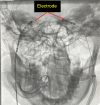Cardioneuroablation for the treatment of reflex syncope and functional bradyarrhythmias: A Scientific Statement of the European Heart Rhythm Association (EHRA) of the ESC, the Heart Rhythm Society (HRS), the Asia Pacific Heart Rhythm Society (APHRS) and the Latin American Heart Rhythm Society (LAHRS)
- PMID: 39082698
- PMCID: PMC11350289
- DOI: 10.1093/europace/euae206
Cardioneuroablation for the treatment of reflex syncope and functional bradyarrhythmias: A Scientific Statement of the European Heart Rhythm Association (EHRA) of the ESC, the Heart Rhythm Society (HRS), the Asia Pacific Heart Rhythm Society (APHRS) and the Latin American Heart Rhythm Society (LAHRS)
Erratum in
-
Correction to: Cardioneuroablation for the treatment of reflex syncope and functional bradyarrhythmias: A Scientific Statement of the European Heart Rhythm Association (EHRA) of the ESC, the Heart Rhythm Society (HRS), the Asia Pacific Heart Rhythm Society (APHRS) and the Latin American Heart Rhythm Society (LAHRS).Europace. 2025 Feb 5;27(2):euaf023. doi: 10.1093/europace/euaf023. Europace. 2025. PMID: 39932921 Free PMC article. No abstract available.
Abstract
Cardioneuroablation has emerged as a potential alternative to cardiac pacing in selected cases with vasovagal reflex syncope, extrinsic vagally induced sinus bradycardia-arrest or atrioventricular block. The technique was first introduced decades ago, and its use has risen over the past decade. However, as with any intervention, proper patient selection and technique are a prerequisite for a safe and effective use of cardioneuroablation therapy. This document aims to review and interpret available scientific evidence and provide a summary position on the topic.
Keywords: Atrioventricular block; Autonomic nervous system; Reflex syncope; Sinus bradycardia; Vasovagal syncope.
© The Author(s) 2024. Published by Oxford University Press on behalf of the European Society of Cardiology.
Conflict of interest statement
Conflict of interest: none declared.
Figures






References
-
- Brignole M, Moya A, de Lange FJ, Deharo JC, Elliott PM, Fanciulli A et al. 2018 ESC guidelines for the diagnosis and management of syncope. Eur Heart J 2018;39:1883–948. - PubMed
-
- Glikson M, Nielsen JC, Kronborg MB, Michowitz Y, Auricchio A, Barbash IM et al. 2021 ESC guidelines on cardiac pacing and cardiac resynchronization therapy. Europace 2022;24:71–164. - PubMed
-
- Pachon MJC, Pachon MEI, Pachon MJC, Lobo TJ, Pachon MZ, Vargas RN et al. A new treatment for atrial fibrillation based on spectral analysis to guide the catheter RF-ablation. Europace 2004;6:590–601. - PubMed
-
- Pachon JC, Pachon EI, Pachon JC, Lobo TJ, Pachon MZ, Vargas RN et al. “Cardioneuroablation”--new treatment for neurocardiogenic syncope, functional AV block and sinus dysfunction using catheter RF-ablation. Europace 2005;7:1–13. - PubMed
-
- Pachon JC, Pachon EI, Cunha Pachon MZ, Lobo TJ, Pachon JC, Santillana TG. Catheter ablation of severe neurally meditated reflex (neurocardiogenic or vasovagal) syncope: cardioneuroablation long-term results. Europace 2011;13:1231–42. - PubMed
Publication types
MeSH terms
LinkOut - more resources
Full Text Sources
Medical
Miscellaneous

